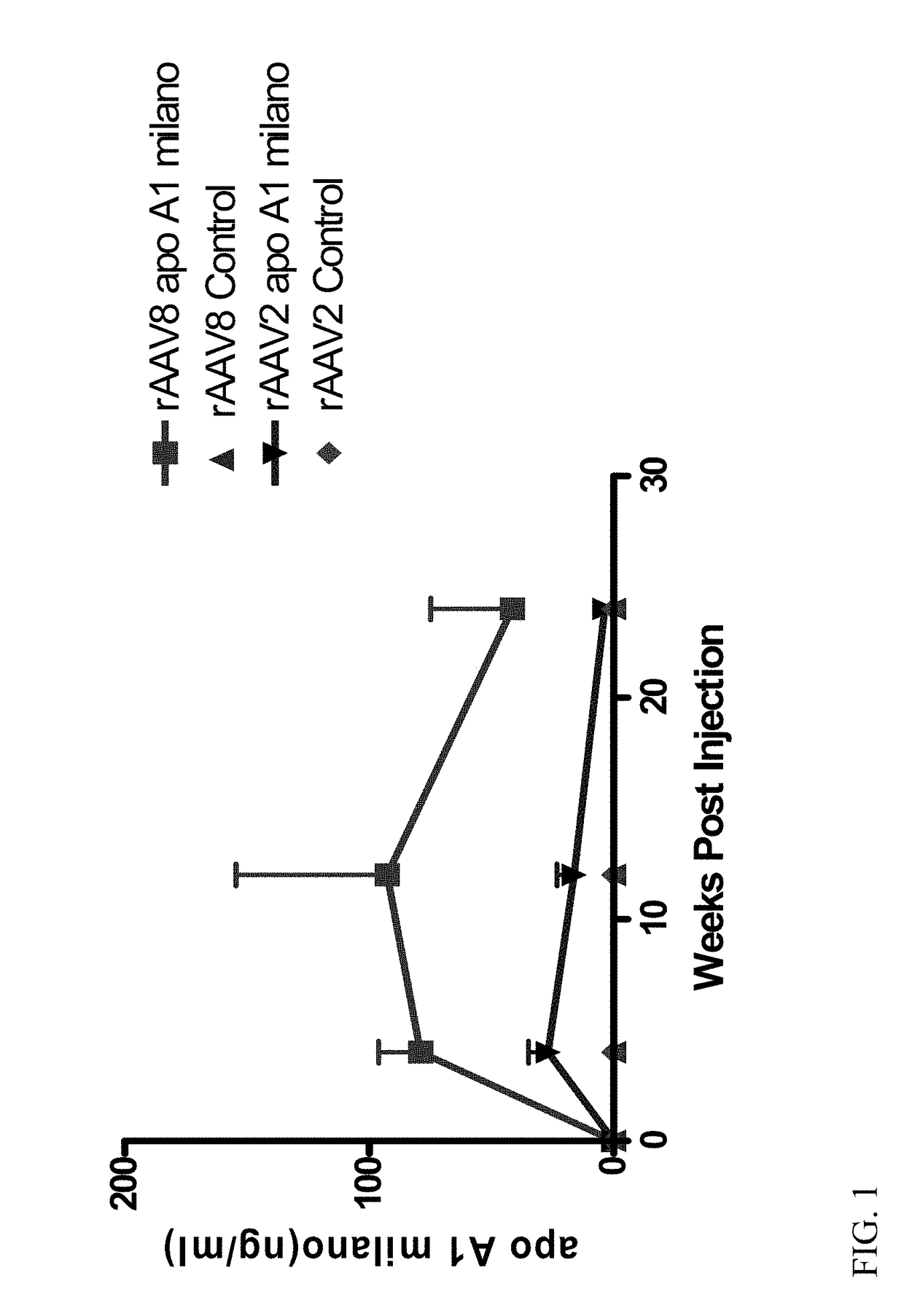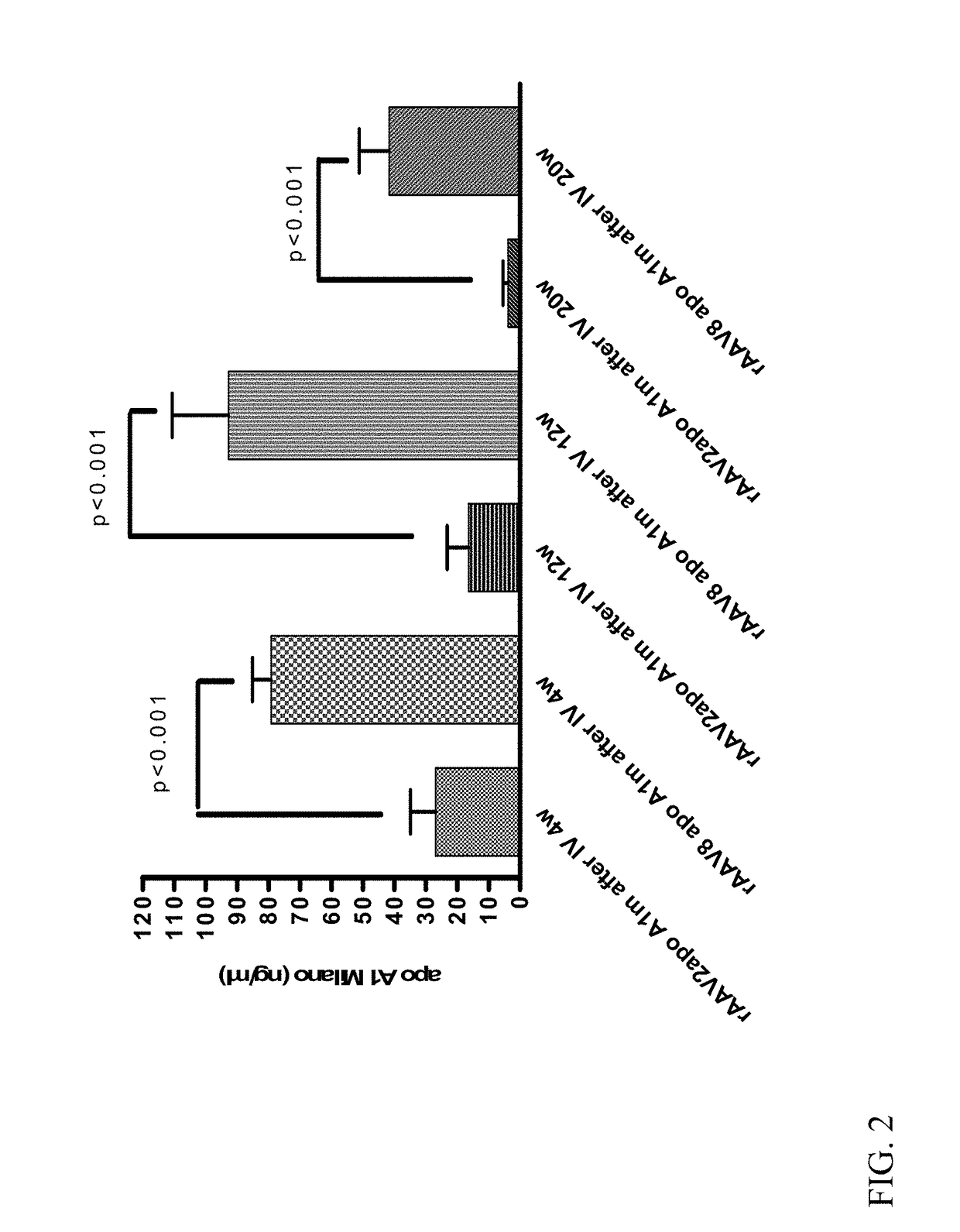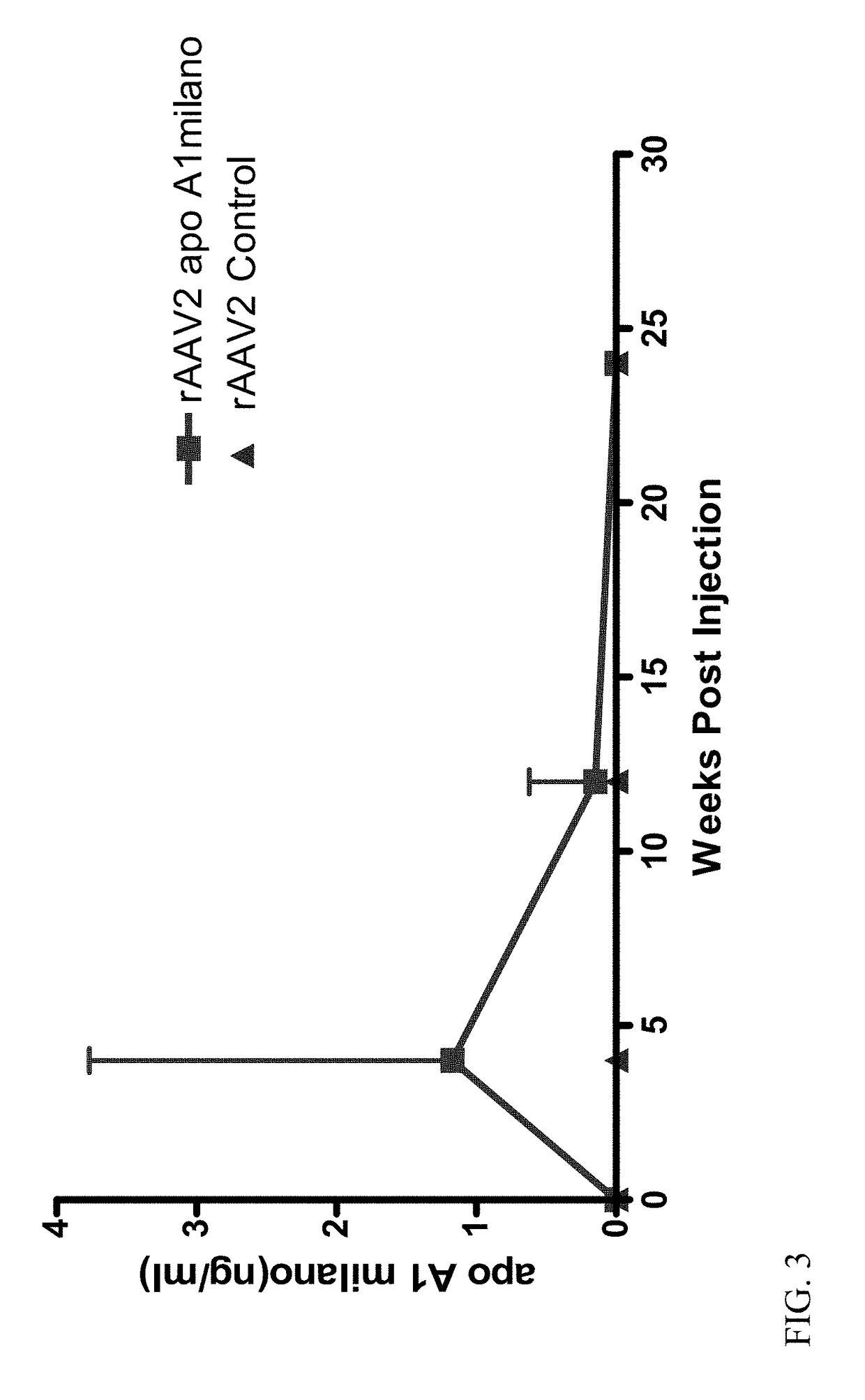Atherosclerosis inhibition via modulation of monocyte-macrophage phenotype using apo a-i milano gene transfer
a technology of monocyte-macrophage and gene transfer, which is applied in the field of vascular diseases to inhibit the progression of atherosclerosis, and can solve problems such as blockage or severe narrowing of the arteries
- Summary
- Abstract
- Description
- Claims
- Application Information
AI Technical Summary
Benefits of technology
Problems solved by technology
Method used
Image
Examples
example 1
[0091]Mice received one intravenous injection of 1.2×1012 vector genome copies of rAAV8-Milano or rAAV8-Control (12 mice per group). Four weeks after injection, mice were placed on high fat diet. Twenty weeks later mice were euthanized and the extent of atherosclerosis in the en fasse aorta, aortic sinuses and innominate artery was measured. Oil-red O staining and Moma-2 staining were used to measure lipid content and macrophage content of the plaques respectively. Quantitative PCR (qPCR) was used to analyze phenotype of macrophages.
example 2
[0092]Compared to vector control, rAAV 8 Milano recipients had less atherosclerosis in whole aorta (13.4±1.1% vs. 7.7±0.06%, p=0.001), in aortic sinuses (77.1±9.6 vs 44.8±2.3, p=0.01) and in the innominate artery (12.4±2.4 vs 4.4±2.1 mm2; p<0.05). These effects were associated with reduced plaque lipid content in aortic sinuses (20.3±vs 12.8±2.3%, p=0.03) and in innominate artery (14.4±2.5 vs 5.3±1.6%; p=0.001) and reduced plaque macrophage content in aortic sinuses (20.9±2.1 vs 11.7±2.4%, p=0.02) and in innominate arteries (8.3±1.5 vs 3.1±1.1% p=0.01). Compared to vector control, the rAAV8 Milano recipients showed reduced expression of MCP-1 and TNF-α mRNAs (M1 markers) and increased expression of Arg-1 (M2 marker) in circulating mononuclear cells.
example 3
[0093]ApoE− / − ApoA− / − double knockout received one intramuscular injection of 1.2×10′2 vector genome copies of rAAV2-Milano or rAAV2-Control (10 mice per group). Four weeks after intramuscular injection, mice were placed on high fat diet. Twenty weeks later, mice were euthanized and the expression of Apo A-I Milano mRNA in liver was measured by quantitative PCR (qPCR). In addition, the phenotype of macrophages in the liver, peritoneal macrophages, and peripheral blood mononuclear cells (PBMC) were determined by qPCR. The quantitative extent of total aorta plaques was evaluated by oil-red O staining. ELISA analysis was performed to measure serum level of the Apo A-I Milano.
PUM
| Property | Measurement | Unit |
|---|---|---|
| volume | aaaaa | aaaaa |
| volume | aaaaa | aaaaa |
| volume | aaaaa | aaaaa |
Abstract
Description
Claims
Application Information
 Login to View More
Login to View More - R&D Engineer
- R&D Manager
- IP Professional
- Industry Leading Data Capabilities
- Powerful AI technology
- Patent DNA Extraction
Browse by: Latest US Patents, China's latest patents, Technical Efficacy Thesaurus, Application Domain, Technology Topic, Popular Technical Reports.
© 2024 PatSnap. All rights reserved.Legal|Privacy policy|Modern Slavery Act Transparency Statement|Sitemap|About US| Contact US: help@patsnap.com










